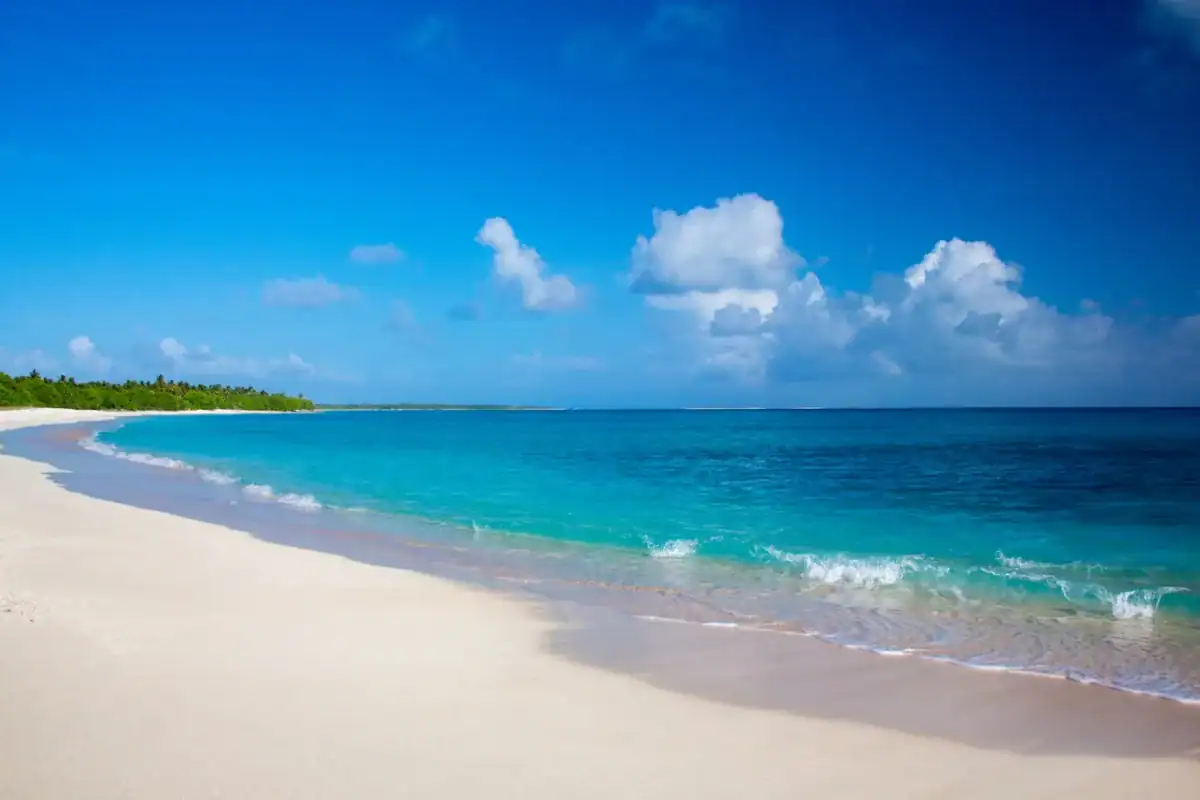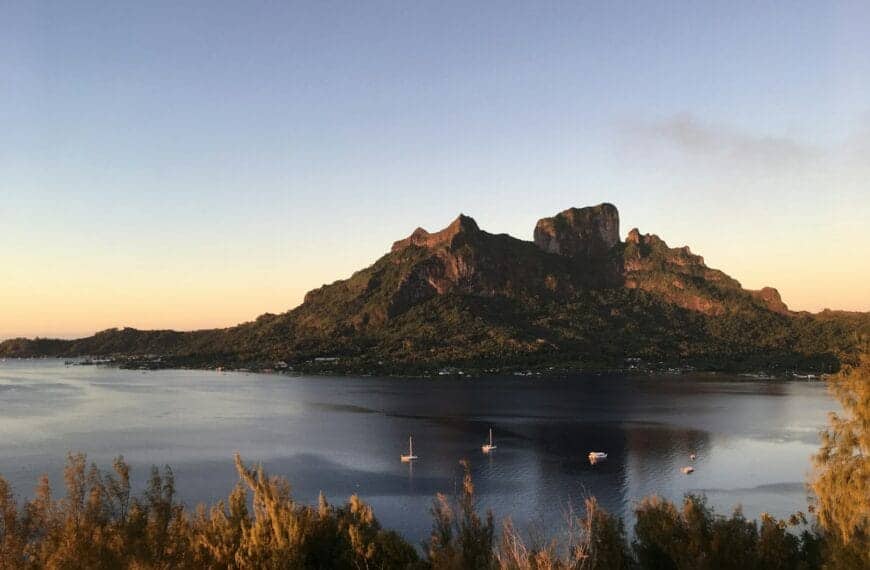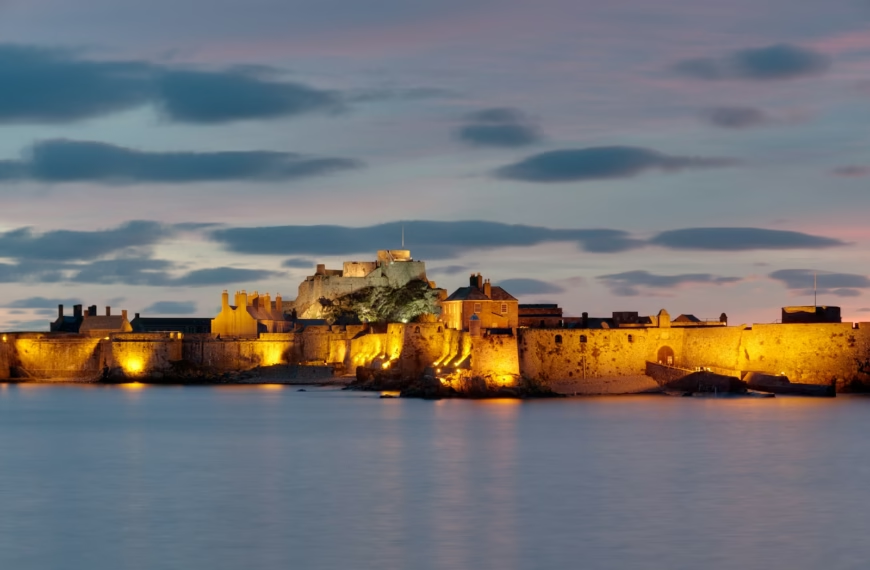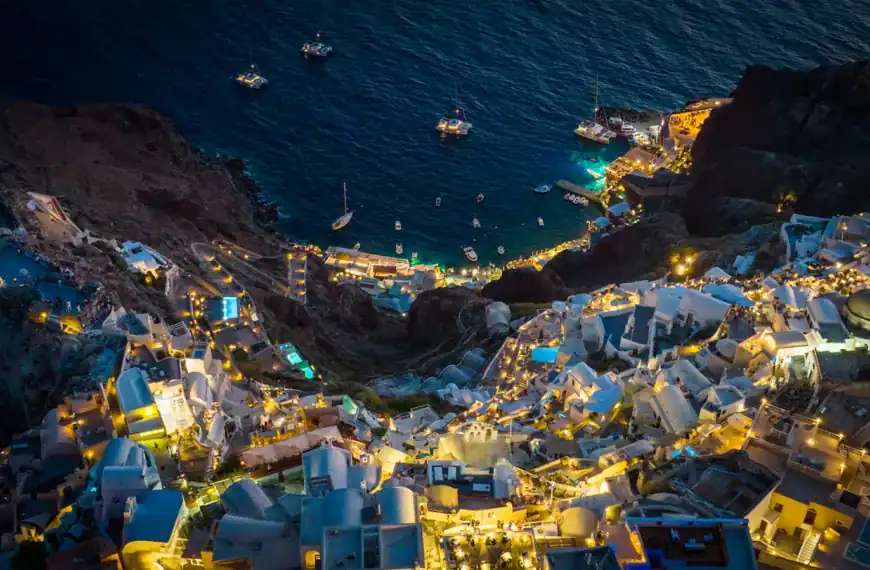Marshall Islands Travel Guide: Islands, Culture & Ocean Adventures
Intro to Marshall Islands Travel Guide
Spread across nearly two million square kilometers of Pacific Ocean, the Marshall Islands are a nation of coral atolls, WWII relics, and warm Micronesian hospitality. With more than 1,000 islands and islets, this remote republic offers experiences as diverse as diving Bikini Atoll’s wrecks, joining traditional canoe voyages, and relaxing on palm-lined beaches with lagoon views stretching to the horizon.
The Marshallese people proudly preserve their culture through navigation, weaving, and storytelling, while their islands hold poignant reminders of nuclear history alongside pristine natural beauty. From bustling Majuro to untouched outer atolls, the Marshalls are a destination that rewards curiosity and slow travel.
Start planning your journey with our complete Marshall Islands Travel Guide — and discover how guided tours can bring the country’s history, nature, and seafaring traditions to life.
Where to Go in Marshall Islands
Ailinglaplap | Ailuk | Arno | Aur | Bikini Atoll | Ebon | Enewetak | Jaluit | Kwajalein | Lae | Likiep | Majuro | Maloelap | Mejit | Mili | Namdrik | Namu | Rongelap | Ujae | Utirik | Wotho | Wotje
💡Quick Facts:
Destination: Marshall Islands
Continent: Oceania (Micronesia region, central Pacific)
Country: Republic of the Marshall Islands (sovereign, Compact of Free Association with U.S.)
Administrative Division: 2 island chains (Ratak, Ralik) with 29 atolls and 5 islands
Area: 181 km² (land), spread over 750,000 km² of ocean
Population: ~42,000
Density: ~232/km²
Capital: Majuro (on Majuro Atoll)
Regions/Subregions:
Ratak Chain (Sunrise Islands): Majuro, Maloelap, Wotje, Ailuk, Likiep
Ralik Chain (Sunset Islands): Kwajalein, Jaluit, Enewetak, Bikini, Rongelap
Official Languages: Marshallese, English
Currency: U.S. Dollar (USD, $)
Time Zones: UTC+12 (Majuro, Ratak), UTC+12/+13 (Kwajalein uses U.S. military base time)
Airports: Marshall Islands International (MAJ – Majuro), Bucholz Army Airfield (KWA – Kwajalein, restricted access), domestic airstrips on outer atolls
Climate: Tropical marine; hot, humid, wet season May–Nov
Known For: Bikini Atoll nuclear history, Kwajalein WWII history, diving, coral reefs, remote island life
🛂Arrival Info:
Visa-free entry: 90 days for U.S. citizens; 30 days for many other nationalities.
Most passports valid 6+ months required.
U.S. citizens may stay indefinitely under Compact of Free Association.
Visitors must show onward/return ticket.
Official entry info: RMI Immigration
🏥Health Info:
No mandatory vaccines; recommended: Hepatitis A, Typhoid, routine immunizations.
Dengue and Zika outbreaks possible.
Main hospital: Majuro Hospital.
Kwajalein has U.S. military hospital (restricted access).
Outer islands: limited clinics, often only basic care.
Medical evacuation frequently required for serious cases.
Travel insurance with evacuation coverage strongly advised.
🚑 Check travel insurance options for travel emergencies, delays, and medical needs abroad — Get coverage here
💉 Stay Informed with Official Updates: WHO – International Travel & Health | CDC – Travel health updates
🚨Travel Advisory:
Generally safe, very low violent crime.
Petty theft occasionally in Majuro.
Typhoon risk: rare but possible (more common in western Pacific).
Significant U.S. military presence on Kwajalein.
🌍Track Real-Time Official Updates: US Travel Advisory | UK Foreign Travel Advice | Government of Canada
🥳Holidays:
Constitution Day (1 May): Marks adoption of Marshall Islands constitution in 1979.
Fishermen’s Holiday (first Friday of July).
Nuclear Victims Remembrance Day (1 March): Commemorates nuclear testing impacts.
Christmas Day (25 December).
New Year’s Day (1 January).
💰Visitor Info:
Currency: U.S. Dollar (USD).
ATMs available in Majuro; scarce in outer islands.
Credit cards accepted in larger hotels/shops in Majuro.
Cash necessary for outer atolls.
Tipping not customary.
Daily budget:
Budget: $60–100
Midrange: $120–200
Luxury: $250+
🛫Airports:
Marshall Islands International (MAJ): Main hub on Majuro Atoll; flights to Guam, Honolulu, Nauru, Fiji, Micronesia.
Kwajalein (KWA): U.S. Army base, restricted civilian access; some flights transit through.
Domestic airstrips: served by Air Marshall Islands (limited reliability).
🧳 Delayed or canceled flight? Check if you’re eligible for compensation
🚍Transport:
Majuro: taxis (shared), limited buses.
Inter-atoll flights by Air Marshall Islands (delays/cancellations common).
Inter-island boats and supply ships connect outer atolls.
Rental cars available in Majuro.
Driving: right-hand traffic, U.S. license valid.
🚗 Book reliable airport transfers and in-city rides in advance. Reserve your ride here
🛰️Connectivity:
SIM/eSIM: National Telecommunications Authority (MINTA), private providers limited.
Mobile coverage: reliable in Majuro, limited to none in outer islands.
Internet: slow and expensive, but Wi-Fi available in hotels and cafes in Majuro.
Outer islands: minimal connectivity.
🛜 Stay connected abroad with affordable eSIM data packs. Get your eSIM here
📜Laws & Etiquette:
Legal drinking age: 21.
Alcohol prohibited in some outer atolls.
Respect traditional leaders and local customs.
Conservative dress expected outside Majuro resorts.
Photography of people and religious sites should be with permission.
👮Emergency Info:
Emergency number: 911 (limited in outer islands).
Majuro Hospital: +692 625 3355.
Air Marshall Islands: +692 625 3733.
U.S. Embassy Majuro: +692 247 4011.
🏛️ Use embassy locator tools: Embassies Worldwide
🌞Weather:
Average temps: 27–30°C year-round.
Wet season: May–Nov (heaviest rains).
Dry season: Dec–Apr (best travel period).
Typhoons rare but heavy rains and flooding possible.
🌦️ Stay prepared—check the weather forecast for your destination — Weather Forecast
Marshall Islands by Region – Where to Go
The Marshall Islands are divided into two parallel island chains: Ratak (Sunrise Chain) in the east and Ralik (Sunset Chain) in the west. Most travelers visit Majuro and Ebeye, while outer atolls are for adventurous explorers.
Ratak Chain (Eastern Islands)
- Majuro Atoll – The capital and main entry point, with a mix of government centers, markets, and nearby dive sites.
- Arno Atoll – A short boat ride from Majuro, known for its traditional villages, fishing, and three distinct lagoons.
- Likiep Atoll – Famous for coconut groves, German colonial history, and preserved traditional houses.
Ralik Chain (Western Islands)
- Kwajalein Atoll – A massive lagoon with WWII history, U.S. military presence, and nearby Ebeye town for cultural experiences.
- Bikini Atoll – A UNESCO site, once a nuclear testing ground, now one of the world’s most haunting and spectacular wreck-diving locations.
- Jaluit Atoll – Former Japanese administrative capital, with ruins, coral reefs, and quiet villages.
Remote Atolls
- Ailinglaplap Atoll – Traditional seat of Marshallese chiefs, known for canoe culture.
- Maloelap Atoll – Scattered WWII relics and remote fishing spots.
- Aur Atoll – Small, untouched, and perfect for cultural immersion.
Top Places to Visit in Marshall Islands
Cultural Capitals
- Majuro Atoll – For urban energy, craft markets, and easy lagoon tours.
- Ebeye (Kwajalein) – Known as the “Athens of the Pacific” for its dense, vibrant community.
Nature Escapes
- Arno Atoll – Quiet beaches, traditional living, and pristine lagoons.
- Likiep Atoll – Lush coconut forests and heritage-rich settlements.
Historic Sites
- Bikini Atoll – UNESCO World Heritage Site, iconic wreck dives.
- Jaluit Atoll – Japanese colonial ruins and WWII airstrips.
Island Beaches
- Laura Beach (Majuro) – A favorite weekend spot with calm waters.
- Enemanit Island (near Majuro) – Lagoon-side picnicking and snorkeling.
Guided Marshall Islands tours unlock these destinations — from diving at Bikini Atoll to cultural canoe rides in Arno, every trip connects history, heritage, and nature.
How to Choose Where to Go in Marshall Islands
- First-time visitors: Base in Majuro for convenience, culture, and day trips.
- History buffs: Visit Jaluit and Bikini for WWII and nuclear-era stories.
- Cultural travelers: Arno and Likiep showcase traditional life and weaving.
- Adventure seekers: Outer atolls like Ailinglaplap or Maloelap for canoeing, fishing, and off-grid escapes.
Pairing Majuro with an excursion to Arno or Bikini creates the perfect balance between comfort and discovery.
How to Get Around Marshall Islands
- International Access: Most travelers arrive via United Airlines flights from Honolulu, Guam, or Kiribati.
- Domestic Flights: Air Marshall Islands operates small planes linking major atolls — schedules are irregular, so plan buffer days.
- Boats: Inter-island cargo ships take passengers but are slow and basic.
- On Majuro: Taxis are abundant and inexpensive; shared rides are common.
- Local Tip: When traveling to outer atolls, bring cash, essentials, and be flexible with timing.
Travel Budget and Costs in Marshall Islands
- Budget: $70–$100/day — guesthouses, shared taxis, local meals.
- Mid-range: $120–$200/day — small hotels, lagoon tours, and domestic flights.
- Luxury: $250+/day — resorts (limited), liveaboard dive trips, private guides.
Sample Costs:
- Taxi ride across Majuro: $3–$5
- Local meal: $6–$10
- Lagoon boat trip: $50–$80
- Dive tour: $100–$150
- Domestic flight: $100–$200 depending on distance
Travelers can reduce costs by staying longer on one atoll rather than moving frequently, since flights add up quickly.
Best Time to Visit Marshall Islands
- Dry Season (Dec–Apr): Best for diving, festivals, and smooth inter-island travel.
- Wet Season (May–Nov): Heavy rain, occasional typhoons, but rich greenery.
- Shoulder Months (Nov & May): Good weather with fewer crowds and lower rates.
The best time to visit Marshall Islands is February–April, when diving conditions are clearest and cultural events peak.
Festivals and Cultural Events in Marshall Islands
- Constitution Day (May 1, Majuro) – National parades, dances, and sports.
- Cultural Day (Sept) – A showcase of canoe building, weaving, and navigation.
- Gospel Day (Dec) – Island-wide religious celebrations with music and feasts.
- Nuclear Remembrance Day (Mar 1) – Honoring victims of nuclear testing with solemn ceremonies.
- Majuro Independence Day (Oct) – Parades, canoe races, and community gatherings.
Each festival offers both cultural immersion and insight into the resilience of the Marshallese people.
Must-See Experiences in Marshall Islands
- Dive Bikini Atoll – Explore ghostly wrecks like the USS Saratoga.
- Sail on a traditional canoe – Learn ancient navigation in Arno.
- Visit Laura Beach – Relax at Majuro’s most scenic shore.
- Walk Jaluit ruins – Japanese colonial architecture still stands.
- Join a weaving workshop – Women’s cooperatives teach pandanus mat making.
- Snorkel Enemanit – Clear waters full of tropical fish.
- Explore Kwajalein WWII sites – Tanks, bunkers, and memorials remain.
- Attend a village feast – Sample Marshallese dishes served with storytelling.
Adventure and Water Activities in Marshall Islands
- Diving Bikini Atoll – Advanced wreck diving with historic significance.
- Snorkeling Majuro Lagoon – Colorful reefs and easy access.
- Deep-sea fishing – Tuna, mahi-mahi, and marlin in offshore waters.
- Kayaking Arno lagoons – Calm paddling among islets.
- Surfing Majuro – Seasonal swells near outer reefs.
- Eco-hiking Likiep – Coconut groves and bird habitats.
National Parks and Outdoor Adventures in Marshall Islands
- Bikini Atoll Marine Protected Area – Wreck dives and reef recovery zones.
- Jemo Island (Majuro) – Protected seabird nesting site.
- Ailinglaplap Atoll – Preserves canoe traditions and pristine lagoons.
- Jaluit WWII Ruins – Historical preservation amid lush jungle.
Permits are required for Bikini Atoll diving, and eco-guides emphasize reef protection and responsible travel.
History and Heritage of Marshall Islands
- Ancient seafarers: Skilled navigation with stick charts, outrigger canoes, and oral traditions.
- Spanish claim (16th–19th c.): Minimal colonization but Catholic influence.
- German era (1880s–1914): Trade stations and copra plantations.
- Japanese rule (1914–1944): Military bases, schools, and architecture.
- World War II: Intense battles at Kwajalein and Enewetak; U.S. victories reshaped the Pacific war.
- Nuclear testing (1946–1958): Bikini and Enewetak atolls saw devastating tests, shaping global disarmament debates.
- Independence (1986): Compact of Free Association with the U.S. granted sovereignty with close ties.
Today, heritage is preserved in navigation schools, weaving cooperatives, and historic memorials across atolls.
Best Travel Itineraries in Marshall Islands
3-Day Majuro Base
Day 1: Tour Majuro town, craft market, and Alele Museum.
Day 2: Lagoon trip to Enemanit Island with snorkeling and picnic.
Day 3: Excursion to Laura Beach for swimming and sunset.
5-Day Cultural Explorer
Day 1–2: Majuro markets, canoe workshops, and Laura Beach.
Day 3: Day trip to Arno Atoll — traditional village visits.
Day 4: Kwajalein WWII history tour.
Day 5: Weaving workshop and lagoon kayaking.
7-Day Wrecks & Reefs
Days 1–2: Majuro diving and lagoon tours.
Days 3–5: Bikini Atoll dive expedition.
Days 6–7: Jaluit ruins + cultural immersion.
10-Day Grand Circuit
- Majuro city and lagoon tours.
- Arno cultural homestays.
- Bikini wreck diving.
- Jaluit WWII and colonial ruins.
- Likiep for heritage villages and coconut groves.
Unique Stays and Accommodation Styles in Marshall Islands
- Hotels in Majuro – Mid-range stays with lagoon views and restaurants.
- Guesthouses in Arno & Jaluit – Simple, family-run, with cultural immersion.
- Liveaboards at Bikini Atoll – Dive-focused expeditions for wreck enthusiasts.
- Homestays – Available on outer atolls, offering authentic daily life.
Local Cuisine and Culinary Experiences
Marshallese cuisine is built around the sea and coconut.
- Iaraj (breadfruit dishes) – Roasted or baked, a staple food.
- Pandanus products – From juices to preserved fruit.
- Marshallese BBQ – Fish, pork, and chicken grilled at fiestas.
- Coconut crab – A delicacy on remote atolls.
- Rice and tuna – Everyday staples blending local and imported food.
Join community feasts or local tours to learn how traditional cooking techniques blend fire pits, coconut milk, and pandanus.
Travel Safety and Cultural Etiquette in Marshall Islands
- General safety: Low crime, but watch belongings in crowded areas.
- Weather: Typhoons are possible June–Nov; check forecasts.
- Health: Bring mosquito repellent, reef-safe sunscreen, and basic medical supplies.
- Etiquette: Ask before photographing people, remove shoes before entering homes, dress modestly in villages.
- Language: English is widely spoken, but basic Marshallese greetings are warmly welcomed.
Practical Travel Tips for Marshall Islands
- Currency: U.S. dollar; ATMs mainly in Majuro.
- Connectivity: Wi-Fi limited outside Majuro; SIM cards available in capital.
- Power: 120V, plugs Type A/B (U.S. standard).
- Cards: Accepted in Majuro hotels; cash essential elsewhere.
- Tipping: Not required but appreciated in tourist services.
- Packing: Lightweight clothes, reef shoes, and snorkel gear recommended.
Where to Go Next – Pair Marshall Islands with These Destinations
- Micronesia Travel Guide – Close neighbors with cultural and natural diversity.
- Kiribati Travel Guide – South Pacific island nation with similar seafaring traditions.
- Guam Travel Guide – Easy flight connections and more Chamorro heritage.
- Hawaii Travel Guide – Honolulu links the Marshalls with U.S. gateways.
Micronesia Travel Guide | Kiribati Travel Guide | Guam Travel Guide | Hawaii Travel Guide
Final Planning Checklist for Marshall Islands
- Confirm Air Marshall Islands flights early — schedules change.
- Book Bikini Atoll dive trips well in advance.
- Carry plenty of cash for outer atolls.
- Download offline maps and translation apps.
- Pack light, breathable clothes and reef-safe sunscreen.
- Bring gifts or supplies if staying in villages (respected tradition).
- Arrange travel insurance that covers diving and remote travel.
- Learn basic Marshallese greetings like Iokwe (“hello”).
Discover the Marshall Islands with confidence — where ocean, culture, and history converge. Explore more guides on our site and plan your next Pacific journey today.










